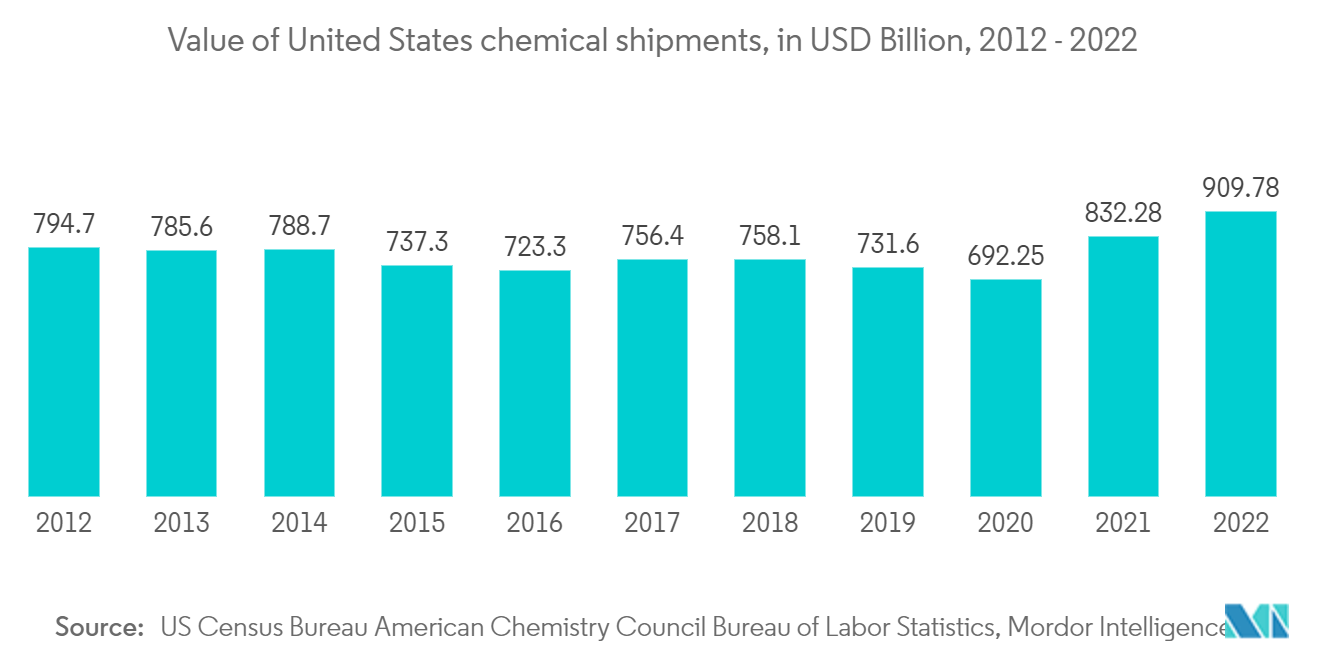Market Trends of Hazardous Goods Logistics Industry
Increase in shipment of flammable liquids driving the market
The most widely used service category by far is transportation logistics, which is estimated to be worth 123.08 billion USD in 2022. The Medical, Nuclear Power, Oil and Gas, and Petrochemical industries are just some examples of the widespread use of hazardous materials in developing or developed economies.
Transport companies transporting dangerous goods must follow standard procedures for the safety of their vehicles and vessels. Other federal agencies regulations on dangerous products, workplace safety and environmental protection also apply.
Over the next few years, the market for hazardous products logistics will benefit significantly from Increasingly strict government regulations. The US Department of Transportation’s (DOT) Pipeline and Hazardous Materials Safety Administration (PHMSA) is responsible for the development and implementation of national regulations for the safe transport of dangerous goods. When transporting dangerous goods to, from, or within the U.S., it is critical to comply with the Hazardous Materials Regulations (HMR 49, Part 100-185).
The UN Model Regulations for the carriage of dangerous goods serve as a reference for the development of standardized regulations for all modes of transport. There is a new edition every two years. In order to facilitate trade and facilitate the safe and efficient transportation of dangerous products, labels or marks specifically designed for the carriage of dangerous commodities on cargo vessels must be applied to the dangerous goods. More importantly, they help make transportation safer.

Asia-Pacific region dominating the market
The Asia-Pacific dangerous/hazardous goods logistics market is estimated to be worth USD 70.08 billion in 2022, with China accounting for more than 52% of the global market. Due to the dramatic shift in oil consumption from the United States to other parts of the world, the global demand for oil has increased.
Large-scale petrochemical development has decreased the demand for gasoline. As a result, more dangerous goods, such as oil and gas, are being transported across the country using trucking services.
The US is projected to become the largest oil producer in the world within the next 5 years, overtaking both Saudi Arabia and Russia. Shipping companies are essential for the oil & gas industry to get their goods to customers around the world. These market trends should lead to an expansion of the hazardous goods logistics market. Hazardous materials should be packaged in accordance with applicable laws and regulations. It is also important to use labels or other identifying indicators on cargo carriers when transporting hazardous materials. This would greatly enhance transit security.
Hazardous waste includes toxic, chemical, and flammable materials. Chemically reactive components release toxic vapors when they come into contact with other components. Due to their high environmental impact, hazardous waste must be properly disposed of. In 2019, the U.S. EPA reported that 34.9 million metric tons of hazardous waste were produced by 23 700 companies and generators in the United States. Industrialization is leading to an increase in waste generation.


